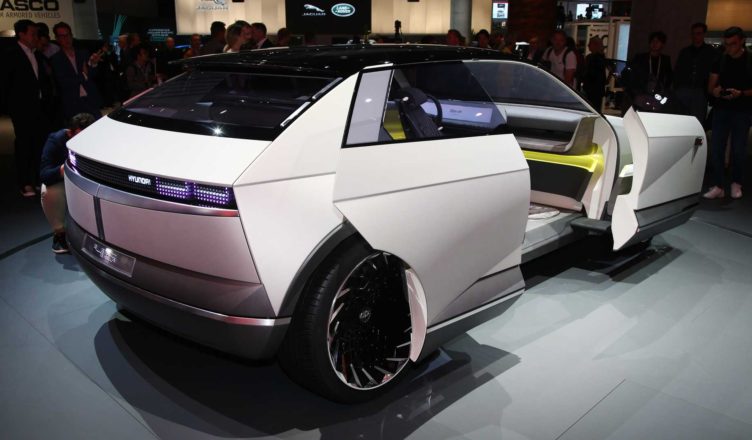Ioniq’s statement of combining performance and charging coupled with stylish puts the company in a competitive position compared to its rivals. The paradigm shift of EV experience that is modern and stylish is imagined by each customer but not delivered by any car manufacturer till now.
Hyundai’s new futuristic cars with see-through windows and flexible screens. Those are just a few things that are being discussed in the Hyundai’s design room. Hyundai’s has reimagined the future electric vehicle, it has bought the new concept to life through the release of newer models of the Ioniq. The early designs include an emphasis on the aesthetics of the interiors. It is one of the concepts that is from a science fiction show.
With the recent partnership with LG, allows Hyundai to have a mixture of both performance and design. Designers will continue to integrate the modern living features into the car, trying to make it feel less like a car and more like a house. At the core, the design attracts the eyes of viewers and creates a niche market in itself. Furthermore the next generation of Hyundai charging capabilities will look to promote smart home technology and vehicle integration.
Hyundai does not stop there, it is entering a new market of sports car, the new RM20e racing midship racecar reflects the changing dynamic of the performance cars. EV’s except Tesla are not known for their powerful performance however Hyundai is also promising a balanced design that could even be ready for the street. The car packs a powerful 810 horsepower motor, allowing it to reach 100km in less than 3 seconds. In addition it is packed with race car qualities offering a balance of traction and braking. The street safe version is going for an overall green transportation push and is hoping to deliver eco-friendly model by 2025. However there aren’t any current promises of stylish sports like the one that is present on the race track. The Hyundai Ioniq and Kona will also have upgraded Hyundai charger speeds, allowing the vehicle to recharge faster.
The performance is one of the striking ordeals making it a top seller in the market. After Tesla, not many car manufacturers are investing heavily into design and performance. This is shown in the future prediction of Hyundai’s expected sales aiming to sell 560,000 pure electric vehicles (EVs) globally per year, with another 1.1 million electrified adding to the figure. At the moment, the pure electric count sits at around 60,000 – so it will be a steep growth curve. Not to keep all the eggs in one basket, Hyundai’ is diversifying by investing into hydrogen cells vehicles. There are clear distinction between BEV’s and HEV and its applications however, Hyundai is looking at this climate crisis problem as a holistically as possible. Hyundai plans to invest not just in electric cars but also home storage, maritime and other commercial uses. Reach out to the team at EVSE Australia for all Hyundai charging station enquires and installations.

